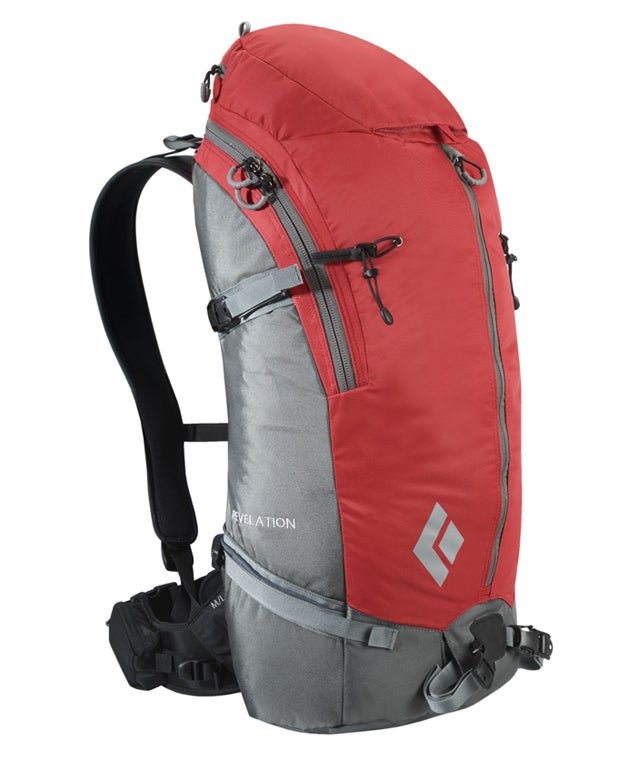Gear makers have responded to backcountry skiing’s growing popularity by more and better equipment. That’s great, but it means that choosing the right pack can be tough.
First, figure out how much pack you need. If you plan to stay close to a resort, you can get away without carrying all that much—some water, an extra layer or two, and a snack. A 1,000 cubic-inch pack, like ($100), is perfect. The Silo 18 accomodates a hydration bladder, gives you quick access to your gear via a panel door, and lets you lug your skis A-frame style or vertically across your back. Better yet, you can remove its waist belt if you’re riding the lifts and need to pull it on and off in a pinch.
($119) is a little bigger at 1,300 cubic inches (size medium), and it comes with a goggle sleeve and a handy pocket for collecting soggy gear. The waist belt has some of its own pockets, too, which are perfect for lip balm and energy gels, although the belt isn’t removable. And, of course, you can carry skis or a snowboard.
If you plan to spend time deep in the backcountry, you’ll want space for more survival gear—an emergency bivy bag, clothing, and an avalanche shovel, probe, and beacon. In that case, you’ll need a larger pack.
I like ($160), a 2,000-cubic-inch bag with a trim shape. It has an insulated hydration sleeve, essential for long days out in the cold, and its main compartment fits plenty of warm clothes, gear, and food. I especially like the helmet sling, which lets you carry a helmet snugly outside the pack while climbing. Six smaller pockets help keep everything else stowed and organized. And for an extra $100, you can buy the Revelation .
—Doug Gantenbein


